Antibiotic reduction and battling coccidiosis
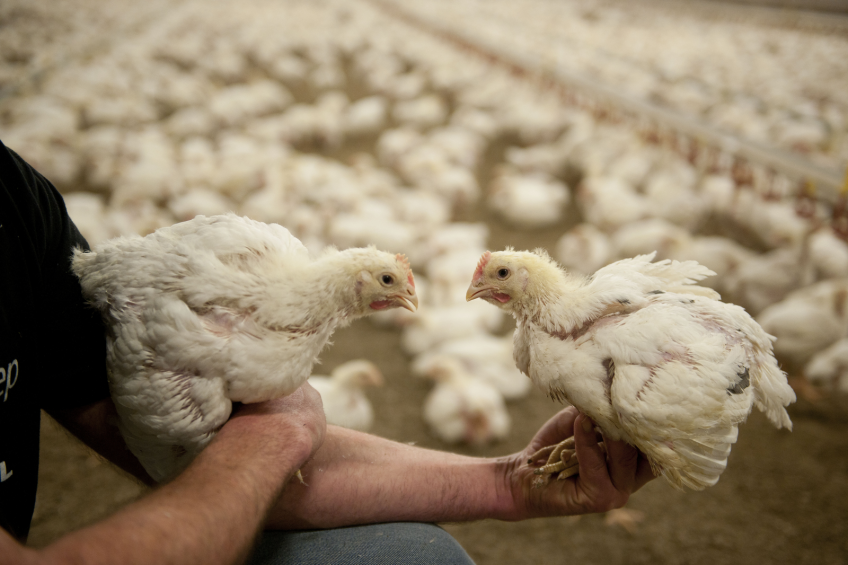
The use of antibiotics in broiler production has to decrease, as is prescribed by certain ?governments in Europe. Coccidiosis with enteric health repercussions have to be kept at bay to reach this goal. A field trial in Belgium with a live coccidiosis vaccine in rotation with ?anticoccidial feed additives gives promising results.
Antimicrobial resistance has become a global public health problem in humans and livestock. As a result, the European Union decided to establish a sustainable policy for the use of antibiotics in the veterinary sector. In 2010, the Dutch government demanded that veterinary consumption of antimicrobials decrease by 50% in 2013, compared to 2009. Moreover, the Health Council of the Netherlands recommended limiting veterinary consumption of well-defined antimicrobials in order to preserve them for human medicine (e.g. fluoroquinolones and β-lactam antibiotics). In Belgium, a 50% decrease in overall use and a 75% reduction in the use of the most critical antibiotics is set as a goal to achieve in 2020.
Furthermore, coccidiosis is still a major disease in broiler production and, economically speaking, it is the most important. Losses are due to mortality and the poor technical performance of the surviving chickens, as well as the cost of the disease’s chemical control. Moreover, coccidiosis is one of the most important predisposing factors for bacterial enteritis. This direct effect on enteric health has a repercussion on the prevalence of other enteric or systemic diseases.
Vaccination against coccidiosis could also have an indirect effect on gut-related diseases (dysbacteriosis, necrotic enteritis, septicaemia after gut leakage) and the consumption of antibiotics could therefore be altered. It has already been seen that the implementation of a coccidiosis vaccine in a rotation programme yields a significant improvement in zootechnical results. The objective of this study was to determine whether the vaccination of broilers with the Hipracox® vaccine affected the use of antibiotics in broilers. The hypothesis was that if intestinal health was enhanced, the overall health of broiler farms would improve.
Promising results
A study was commissioned to show the effects of the use of a coccidiosis vaccine under Belgian field conditions on the use of antibiotics on 21 farms (56 houses in total). This corresponds to a total of 5,404,000 vaccinated broilers. Each house was studied separately. The farms had a history of severe clinical coccidiosis outbreaks. Prior to coccidiosis vaccination, a so-called chemical clean-up programme with a chemical anticoccidial feed additive that had not recently been used was applied to approximately half of the houses; the goal was to reduce background coccidiosis infection pressure and maximise the chances that the vaccine strains would repopulate the house. After the coccidiosis vaccination, all farms returned to their original anticoccidial programme based on monovalent ionophores and/or nicarbazin.
All results were categorised into three groups:
1 – results of cycles before vaccination (“CBV”; 5.15 cycles per house, on average),
2 – during vaccination (“CDV”; 4.02 cycles per house, on average) and
3 – after vaccination (“CAV”; 3.87 cycles per house, on average).
All treatments were taken into account except the start-up treatments applied during the first week. These were categorised into coccidiosis treatments, gastrointestinal treatments and non‑digestive treatments (polyserositis, respiratory infection, arthritis). For each one, the days of treatment per cycle and the quantity of active molecule per kg of chicken (average live weight –LW-) were calculated. The overall averages can be found in Figures a/b/c.
Coccidiosis treatments
Five different drugs are commonly used in Belgium for coccidiosis. Two are based on essential plant oils. They do not have a direct anticoccidial action. Instead, they increase the turn-over of the intestinal cells and further intestinal recovery. Because these products do not interfere with the Eimeria life cycle, they can be used in vaccinated flocks to support intestinal integrity. The evolution of the days of treatment per cycle and the quantity of active molecule per kg of chicken (average weight) is shown in Figures 1 and 2. The first parameter decreases to 79.56% during vaccination, comparing before (CBV) and 51.38% after vaccination (CAV), whereas the second parameter decreases to 76.47% during and to 64.71% after vaccination compared to before. The active molecule data were not evaluated because these phytotherapeutic compounds lack a well-defined active substance level.
Gastrointestinal treatments
All the currently administered gastrointestinal antibiotics in Belgium are evaluated in this section; Figures 3 and 4 show the evolution of their use before (CBV), during (CDV) and after (CAV) coccidiosis vaccination. There is a reduction with regard to the days of treatment per cycle of 16.14% during (CDV) and 45.24% after vaccination (CAV). The amount of active molecule per kg of average weight decreases by 17.39% during and 30.43% after vaccination. The details for each type of antibiotic can be found in Figures 3, 4.
Non-digestive treatments
Finally, the antibiotics used for non-enteric indications are evaluated in Figures 5 and 6. The conclusions are comparable to those found using enteric antibiotics. During vaccination (CDV), the days of treatment per cycle increase by 56.33%, while the amount of antibiotics per kg of chicken remains the same compared to the cycles before vaccination (CBV). This can be explained by the fact that more treatments were given at a younger age (lower body weight means lower amount of antibiotics used). The coccidiosis vaccination helps to maintain intestinal health and we suppose that it has an indirect positive effect on the gut flora and the integrity of the intestinal wall preventing pathogens from invading the bloodstream.
Comparing the cycles before and after vaccination (CAV), the two parameters (days of treatment and amount of active substance/kg of chicken) increase respectively by 27.85% and 27.17%. Three antibiotics are primarily responsible for this increase: enrofloxacin, amoxicillin and doxycycline. Enrofloxacin is used for the treatment of egg yolk infections during the first week so that the coccidiosis vaccination cannot have an effect on this disease. Amoxicillin and doxycycline are mainly used for bacterial arthritis (Enterococcus spp., Staphylococcus spp.). Under Belgian field circumstances, we observed a higher prevalence of bacterial arthritis under summer conditions. The data (CAV) in this study were collected during the spring and summer, partly explaining the higher consumption of amoxicillin and doxycycline.
Improve intestinal integrity
The first aim of a coccidiosis vaccination is to prevent coccidiosis, although an indirect positive effect of coccidiosis vaccination on other diseases can be expected due to an improvement in intestinal integrity. Popular belief in broiler production tells us that more necrotic enteritis and dysbacteriosis appear in vaccinated flocks due to the lack of the anticlostridial effect of ionophores. However, no cases of necrotic enteritis were shown during this trial. Furthermore, the quantity of antibiotics used for enteric disease declined while vaccinating.
No positive effect of the coccidiosis vaccination on the non-digestive treatments was demonstrated here. Nevertheless, there is a reduction of antibiotic treatments for coccidiosis after vaccination (64.71%) and intestinal treatments (30.43%). Furthermore, the quantity of amoxicillin and β‑lactam used for enteritis is also significantly lower (24.45%). All these data show that the implementation of a coccidiosis vaccination in a rotation programme for coccidiosis control could be one of the solutions to respond to the political expectations concerning antimicrobial resistance.
References available upon request.
[Authors: By Fabian Brockötter | S. Ronsmans & A. Flament & J. Van Erum: Veterinary Practice Galluvet, Lummen, Belgium | M. Dardi & J. Rubio: HIPRA, Amer (Girona), Spain]
Join 31,000+ subscribers
Subscribe to our newsletter to stay updated about all the need-to-know content in the poultry sector, three times a week. Beheer
Beheer
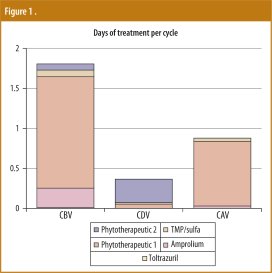
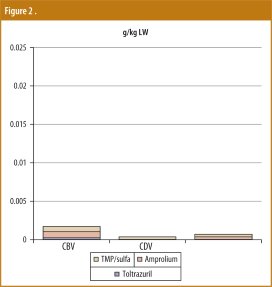

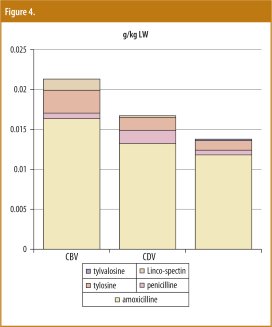
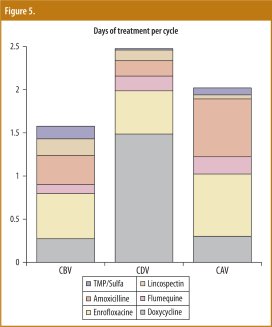
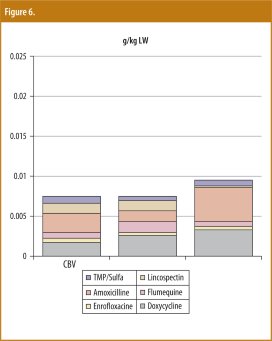








 WP Admin
WP Admin  Bewerk bericht
Bewerk bericht